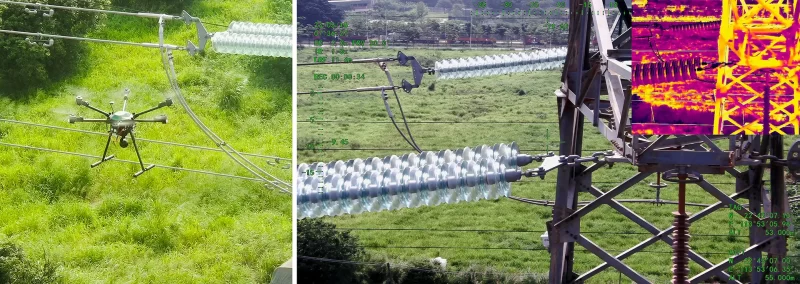Style
Camera Pods Revolutionize Unmanned Power Line Inspections
The advent of camera pods has fundamentally transformed power line inspections, making them faster, safer, more precise, and less reliant on manual labor. These innovative devices have set new standards for efficiency and reliability, paving the way for an intelligent, unmanned approach to maintaining power grids.

1. Traditional Methods: Manual Inspections Took Center Stage
Inspection Techniques: In the past, power line inspections were predominantly carried out using ground-based visual checks or by climbing poles and towers. Occasionally, tools like binoculars or simple infrared imagers were used to assist in the process.
Low Productivity: Manual inspections were time-consuming and could take days to cover a single power line, especially in regions with rugged terrain.
Safety Hazards: Inspectors often faced dangerous working conditions in high-voltage areas, at significant heights, or in difficult-to-access locations, increasing the risk of accidents.
Unstructured Data Logging: Inspection records were mostly kept on paper, making digital storage and efficient data analysis nearly impossible. This lack of organization hindered historical comparisons and scientific maintenance strategies.
2. The Present: Camera Pods Transform Inspections
Automation: By mounting camera pods on drones, inspections can now be fully automated, following pre-programmed flight paths. These drones can cover tens of kilometers of power lines within an hour, dramatically increasing efficiency.
Advanced Sensors: Equipped with high-definition cameras, infrared thermal imagers, and multispectral cameras, these pods can detect issues like temperature variations, corrosion, aging, and structural cracks with pinpoint accuracy.
Real-Time Data Transmission: Using 5G or other low-latency communication technologies, camera pods stream live footage and inspection data to ground stations, enabling rapid fault diagnosis.
Organized Data Management: Inspection results are stored on cloud platforms, allowing for historical data comparison, trend analysis, and scientific maintenance planning.
Improved Safety: Fully unmanned operations eliminate the need for human workers to approach high-voltage lines or elevated areas, significantly reducing safety risks.
3. Future Trends: The Evolution of Camera Pods in Power Line Inspections
AI-Driven Automation: The integration of artificial intelligence will enable automatic fault detection and predictive maintenance planning, making inspections smarter and more proactive.
Enhanced Sensor Fusion: Combining technologies like LiDAR, ultraviolet imaging, and multispectral sensors will improve detection precision and expand coverage.
All-Weather Performance: Pods will be designed to operate reliably in harsh weather conditions and at night, enabling 24/7 inspections.
Cloud-Based Collaboration: Real-time data uploads to cloud platforms will facilitate historical comparisons, trend analysis, and optimized grid management.
Sustainable Design: Lightweight materials and eco-conscious designs will improve drone endurance while promoting environmental sustainability.
The future of camera pods lies in their ability to achieve greater intelligence, accuracy, and efficiency. These advancements will drive power line inspections toward a fully automated and comprehensive approach, ensuring the reliability and safety of power grids worldwide.
